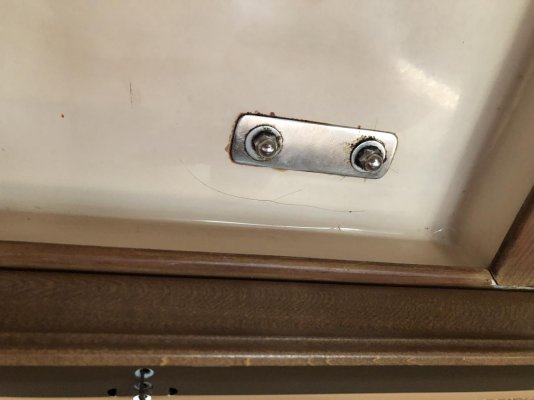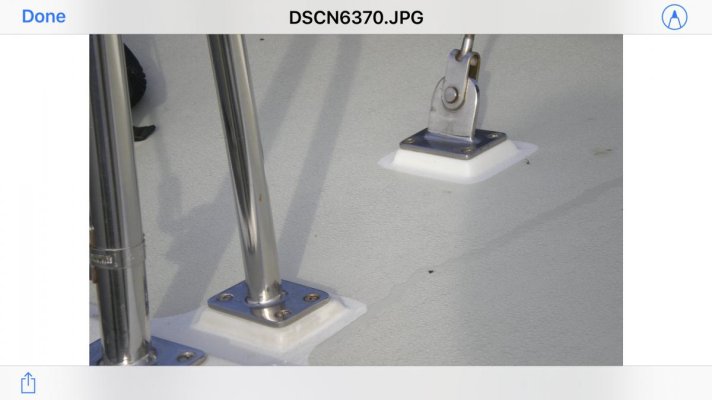Trawler_traveler
Veteran Member
- Joined
- Mar 26, 2017
- Messages
- 89
- Location
- Where the anchor is
- Vessel Name
- Shiplet
- Vessel Make
- 382 Diesel Duck
For safety I'd really like to put some lifelines or even a solid rail on the dinghy deck up top (pilot house trawler). However, I do NOT want to screw into the cored dinghy-deck.
What I'm thinking about trying is to grind down to the FG in areas where the stanchions would go and build up solid FG thick enough to screw stanchions into without piercing the deck.
I'm looking for ideas about how one would do this most effectively as I assume we're not the first to try something like this ?
Thanks,
-Sven
What I'm thinking about trying is to grind down to the FG in areas where the stanchions would go and build up solid FG thick enough to screw stanchions into without piercing the deck.
I'm looking for ideas about how one would do this most effectively as I assume we're not the first to try something like this ?
Thanks,
-Sven


